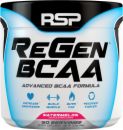
4 Moves You Should Steal From CrossFit
CrossFit didn't invent these 4 awesome full-body moves, but you may have been avoiding them out of fear of someone asking, "So, you do CrossFit?" Don't be ashamed. Steal them and feel the good pain!
Whether you love it, hate it, or just admire it athletically from afar, you probably know how you feel about CrossFit as a fitness phenomenon at this point. So what about as a collection of training techniques? Sure, you can rail all you want about the butterfly pull-ups and high-rep Oly lifts, but those are honestly a small—and competition-specific—part of the massive CrossFit portfolio.
If you haven't investigated the overall training approach to see what you can take from it and plug into your own training, well, you're probably missing out. Here are four undeniably awesome movements that could pay off big time for just about any lifter or gym-goer.
CrossFit athlete Hannah Eden will tell you exactly why they should be part of your overall program, as well as give her tips to perform them flawlessly.
Double Under
"At first glance, the double under seems like a ridiculously simple skill to learn," says Eden. "You jump once, and the rope passes under your feet twice." Don't let the simplicity fool you, however.
"Learning this skill is not for the impatient," she says. "It is a complex skill that'll blast your shoulders, shred your core, and jack your heart rate up while taxing both your aerobic and anaerobic energy system." In other words, it's a solid contender for your program.
But there's a catch: It's not just as straightforward as jumping higher. "The connection between the mind and muscle is critical for this exercise," warns Eden. "You'll need to practice it constantly in order to master it." That's why she recommends approaching it seriously and strategically.
"First, buy a good jump rope," she says. "Don't cheap out and by the first rope you find. As far as your form is concerned, you'll want to keep your elbows back and extended and think of rotating the rope from your wrists. Imagine drawing a circle on a quarter; you want short, sharp whips."
She also recommends that you keep your gaze up to where the ceiling meets the wall. This will help you stand tall and get more height to each jump. "Jump on the balls of your feet and extend your legs every time your feet leave the floor," she says. "Remember that you are in control of the rope, not the other way around. You decide how fast or slow the rotation is."
So where do you put these in your workout? They can work as a finisher, but honestly, you might not have enough in the tank at that point to give them the effort and attention they demand. Instead, try starting your workout with them, like Eden does in her Monster Mondays 30-60-90 workout from the article "4 High-Performance Cardio Workouts."
Burpees
Most people have a love-hate relationship with the burpee; you love the results you get from this exercise, but the cost is that you will hate doing them.
"A burpee is a dynamic and fast-paced fat burner that strengthens and conditions your entire body," explains Eden. "With each rep, you'll work your arms, chest, quadriceps, glutes, hamstrings, and core. Add 8-10 of these suckers between your lifting sets, and you'll be feeling the effects in no time." In her Monster Mondays workout, she even adds a pull-up at the top of burpee reps, creating one brutal full-body move.
"The fundamentals of the burpee are simple: Drop down and get back up," Eden says. But as anyone who has ever done 30-50 of them in a row knows, even the simplest technique becomes a tall order pretty quickly. Eden's solution is to keep your technique airtight from the start so you're not leaking energy unnecessarily.
"First, place your hands on the ground about shoulder-width apart," she says. "Next, jump your feet back while bringing your chest down to the ground. From here, jump your feet back behind your hands, landing flat-footed to protect your knees. Stand up to full extension, then jump and clap your hands above your head."
Easy enough, right? Now do it again. And again.
Wall Ball Throw
CrossFit's use of weighted medicine balls is a great example of how it can dust off an old-school classic implement and remind us all how effective it really is. "This is a top-notch multijoint functional movement," says Eden. "It utilizes two key movements—a weighted squat and a push press—and can be customized for strength, power, or serious conditioning."
She notes that the muscles worked during this exercise include, well, all of them: the quads, glutes, calves, hamstrings, abs, lower back, upper back, chest, front deltoids, back deltoids, biceps, and triceps. It's a complete strength builder. But of course, it's all in the execution.
First, hold the ball in a front-squat position with your elbows in front of your body, then squat deeply. "Imagine tapping your butt in an imaginary hot seat," she explains. "Once you reach the bottom of your squat, explosively drive up through your heels and complete a push-press to launch the ball from the front rack position to a 9- to 10-foot-high target on the wall."
The higher the target is for this exercise, the more explosive power you'll need to generate. However, aiming too high can result in poor form, so don't go higher than 10-12 feet, depending on how tall you are. If you can easily reach your highest target, that's a sign it's time for a heavier medicine ball, not a higher target.
This exercise will improve your strength and physique, and you'll probably have a load of fun doing it. It's far too seldom that we get to actually throw stuff around in the gym.
Barbell Thruster
"The thruster is the perfect exercise to define what a compound, multijoint exercise really is," says Eden. "It's a front squat that goes into an overhead press." As such, you can expect this exercise to work your quads, hamstrings, glutes, core, shoulders, biceps, triceps, and even your upper back to a surprising degree.
"Heavier loads with lower reps will improve your overall strength from head to toe, while lighter weight for higher repetitions are great for high-intensity interval training," she says. Depending on whether you want to build muscle or torch fat, you can decide which way you wish to perform this exercise.
Eden recommends standing with your feet in the base of your regular squat position, right around hip-width to shoulder-width apart. From there, you'll want to keep the barbell in the front-rack position with your elbows up. "They should be like headlights of a car," she explains. "Your elbows should remain high as you squat down, and only when you reach the full depth of your squat should you explode up by driving your heels through the floor."
Add the thruster to your workout routine early on in your session when you're feeling fresh and ready to tackle it with maximum energy. As you become more proficient, you can move it later in the workout and treat it more as conditioning.
Any of these workouts can be plugged into your current program to make it just a little more challenging or interesting. Conversely, you could stick a couple of them together and make a full-body workout that will have you asking, "Why don't I do that more often?"


